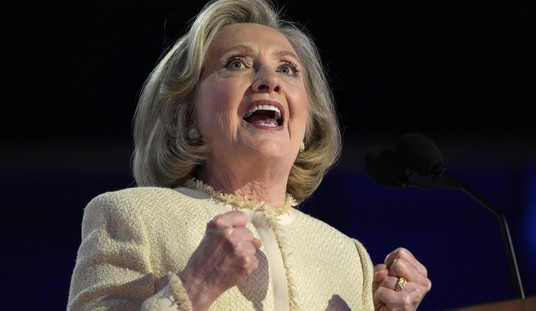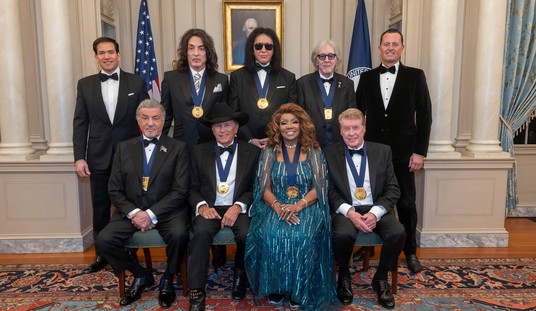
The Columbia Journalism Review reports that a newly released document indicates the Obama DOJ’s spying operation was far more comprehensive than had been thought.
CJR writes, “In 2013, the Justice Department launched a brazen attack on press freedom, issuing sweeping subpoenas for the phone records of The Associated Press and several of its reporters and editors as part of a leak investigation. At the time, the subpoenas were widely seen as a massive intrusion into newsgathering operations. Last month, we learned that they told only part of the story.”
The spying was triggered by an AP report “on a thwarted Yemen-based bomb plot, which contained classified information about the CIA operation.” The DOJ conducted a search for the leaker by gathering two-months of phone records on 21 different lines.
AP Chief Gary Pruitt stated that the information “collected could reveal communications with confidential sources across all of the newsgathering activities undertaken by the AP during a two-month period, provide a road map to AP’s newsgathering operations and disclose information about AP’s activities and operations that the government has no conceivable right to know.”
It was actually worse than Pruitt had thought. “The new report, obtained by the Knight First Amendment Institute at Columbia University and the Freedom of the Press Foundation, finds that the DOJ actually collected records on 30 phones.”
The report shows that DOJ attorneys at one point considered subpoenaing records of The Washington Post, The New York Times, and ABC News and “strongly suggests that the attorneys went so far as to obtain ‘telephone numbers and other contact information’ for reporters and editors at those organizations who had worked on articles about the Yemen bomb plot.”
The CJR goes on to say, “Disturbingly, the report does not come close to explaining why the subpoenas targeted the trunk lines of major AP offices — lines which could potentially reveal communications with confidential sources across all of the AP’s newsgathering activities.”
Issues & Insights John Merline says that the Obama administration’s intrusion of the AP was not an isolated event. The administration tried to “bully and silence the few reporters who dared challenge his spin on events.” Merline writes:
Obama repeatedly barred Fox reporters from events. At one point, it named Fox News reporter James Rosen as a “co-conspirator” in a leak case being pursued under the Espionage Act. Obama’s communications director Anita Dunn said the White House treated Fox News “the way we would treat an opponent.”
The administration also spent seven years trying to force New York Times reporter James Risen to reveal his sources.
Risen, writing in The New York Times in 2016, noted bitterly how “Over the past eight years, the administration has prosecuted nine cases involving whistle-blowers and leakers, compared with only three by all previous administrations combined. It has repeatedly used the Espionage Act, a relic of World War I-era red-baiting, not to prosecute spies but to go after government officials who talked to journalists.”
In 2013, Leonard Downie called Obama’s efforts to control information “the most aggressive I’ve seen since the Nixon administration, when I was one of the editors involved in The Washington Post’s investigation of Watergate.”
When not harassing reporters, Obama officials refused to cooperate with them, racking up the worse record for fulfilling FOIA of any previous administration. Obama even routinely banned news photographers from official events so he could keep an iron grip on his image. Michelle Obama banned the press from her taxpayer-paid China visit.
Also around this time, the Federal Communications Commission announced plans to investigate whether newsrooms were meeting their communities’ “critical information needs.”
On Obama’s watch, the U.S. ranking for press freedom dropped to 46th place.
Yet, despite the occasional grumbling by an editor or a reporter here or there, most of these attacks went unnoticed. Whenever Obama spoke to the press, he pretended to be their champions. And the press, in turn, acted like teenagers in love rather than professionals threatened by a paranoid control freak.
In fact, when reporters tried to complain about Obama’s treatment, the reporters themselves often got attacked.
The Baltimore Sun’s David Zurawik wrote in 2014 that “I have been comparing Obama to Nixon in his disdain for the First Amendment and a free press since 2009, and mainly all I got was attacked — often from long-time colleagues in the media who couldn’t believe the object of their political affection could have such contempt for them.”
So why has the press saved all its ire for Trump, who has — despite his words — been far friendlier to the press in his deeds than Obama? One can only speculate.
NOTE: Issues & Insights is a fairly new site founded by veterans of IBD’s (Investor’s Business Daily) editorial page which, in my opinion, gives the Wall Street Journal’s editorial page a run for its money. The author of this report, John Merline, was the deputy editor of commentary and opinion over at IBD prior to launching I & I. Here is a link to this great new site.













Join the conversation as a VIP Member